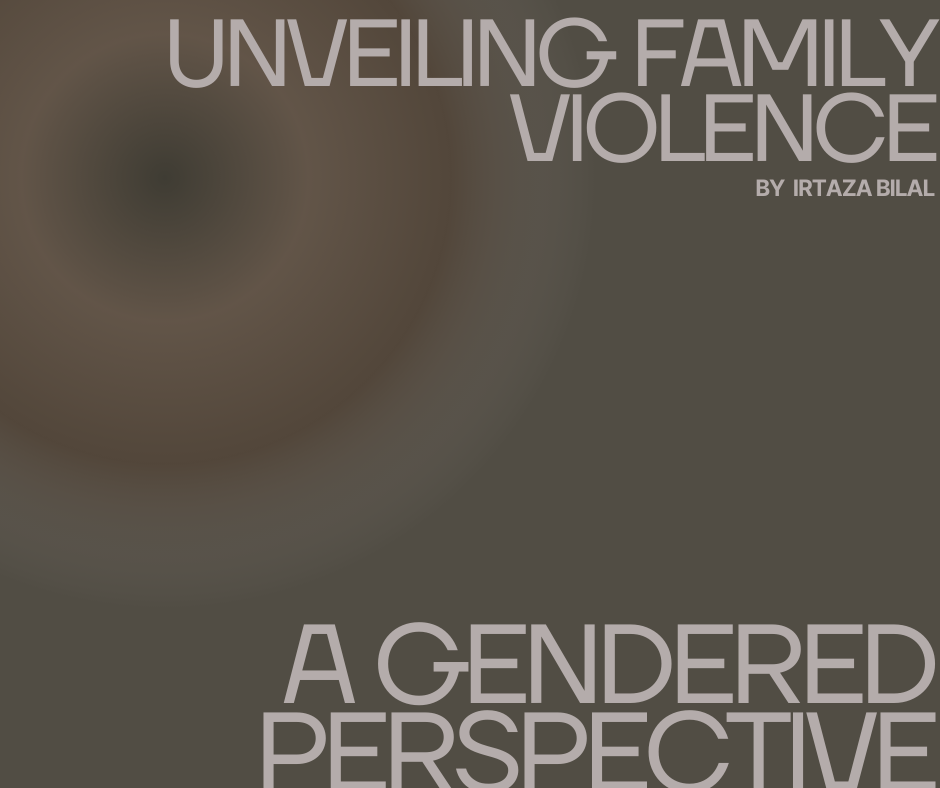Family violence is a pervasive issue that affects individuals and communities worldwide. This blog aims to shed light on family violence from a gender perspective, emphasizing the importance of understanding how gender dynamics intersect with this issue. Additionally, By examining family violence through this lens, we can better grasp its root causes, consequences, and develop strategies to address it effectively.
Understanding Family Violence:
Unveiling Family Violence: A Gendered Perspective, Family violence, often referred to as domestic violence, encompasses various forms of abusive behavior within familial or intimate partner relationships. It includes physical, emotional, psychological, sexual, and financial abuse. Furthermore, This violence occurs across all socio-economic backgrounds, races, and cultures, making it a widespread concern.
##FamilyViolence #GenderPerspective #DomesticAbuse
So, Here The Gendered Nature of Family Violence:
- Power Imbalance: Family violence frequently manifests as a result of power imbalances rooted in gender. Historically, traditional gender roles have assigned men greater power and control within relationships, Thus, making it easier for them to exert dominance over women.
- Patriarchal Societies: where men are traditionally seen as breadwinners
- Socialization: From an early age, individuals are socialized into gender roles. However, These gendered expectations can lead to toxic behaviors and power imbalances that fuel family violence.
The Impact of Family Violence on Women:
- Physical and Emotional Trauma: Women who experience family violence suffer physical injuries and emotional scars that can last a lifetime. Therefore, The fear and trauma associated with abuse can affect their overall well-being.
- Economic Consequences: Family violence can disrupt women’s economic stability by limiting their ability to work, access education, or maintain financial independence. In Essence, This can trap them in abusive relationships.
- Cycle of Violence: Women who witness or experience family violence may be more likely to accept or perpetuate such behavior in their own relationships, perpetuating a cycle of abuse.
##GenderEquality #BreakTheCycle #StopFamilyViolence
Men as Victims and Perpetrators:
In Addition, Unveiling Family Violence, It’s crucial to recognize that while women are disproportionately affected by family violence, men can also be victims. Men facing abuse may encounter unique challenges, such as societal expectations that discourage them from seeking help. Moreover, some men may perpetrate violence due to learned behaviors or unresolved issues stemming from their own experiences of abuse.
Addressing Family Violence:
- Education and Awareness: Promoting education on healthy relationships, consent, and gender equality is essential. Schools, community organizations, and families can play a pivotal role in shaping attitudes and behaviors.
- Support Services: Establishing accessible support services for survivors, including shelters, Besides that, counseling, and legal aid, is crucial. These services must be gender-inclusive to accommodate both male and female survivors.
- Policy Reform: Advocating for and implementing policies that protect survivors and hold perpetrators accountable is vital.
- Community Engagement: Engaging communities in dialogue about family violence helps break the silence surrounding the issue. Grassroots initiatives can empower individuals to speak out and support survivors.
Conclusion:
we must adopt a gender perspective that recognizes the power imbalances and societal norms that perpetuate abuse. Lastly, By addressing the gendered nature of family violence, we can work toward creating safer, more equitable family environments for everyone.
##GenderEqualityNow #BreakTheSilence #FamilyViolenceAwareness

